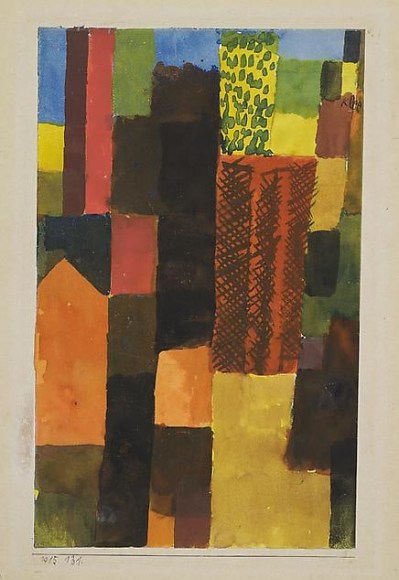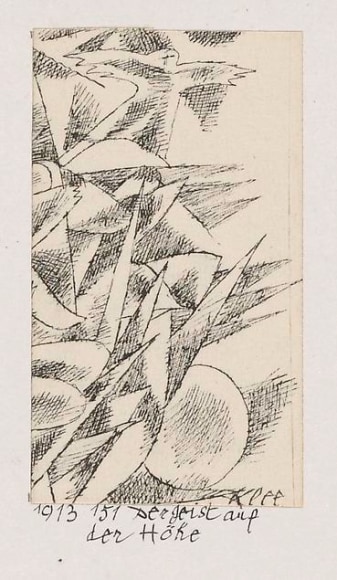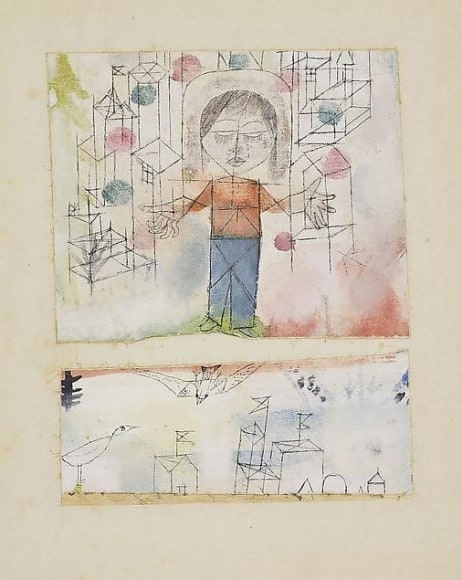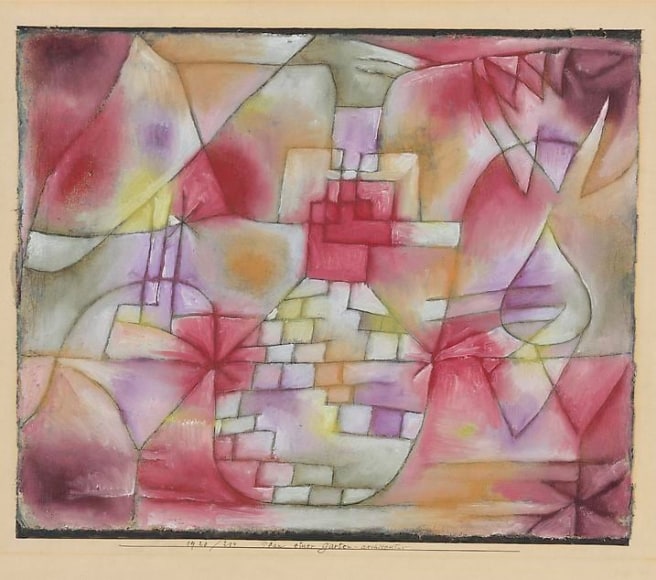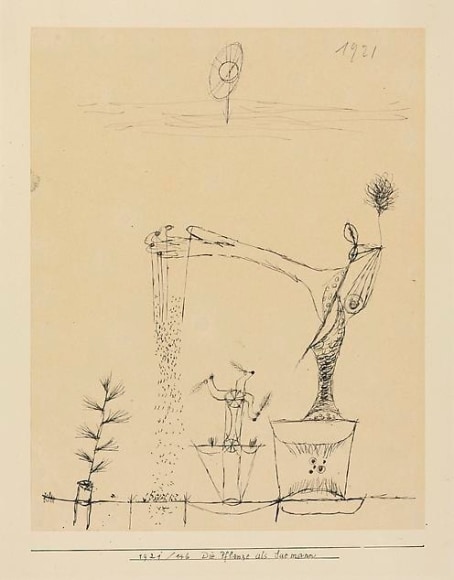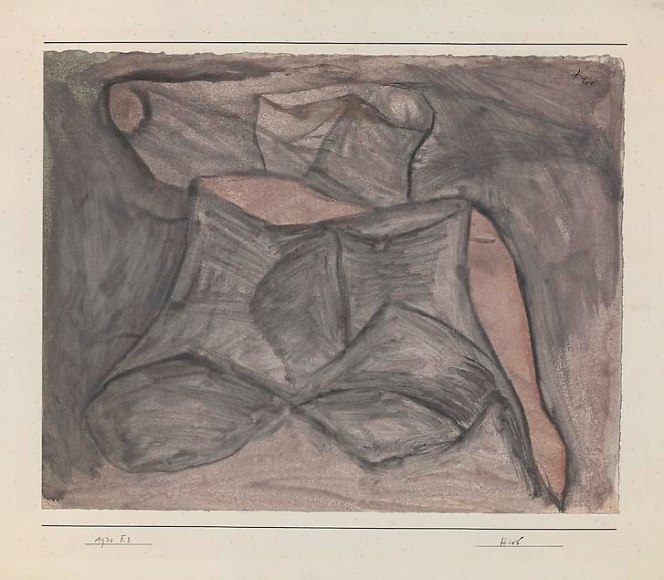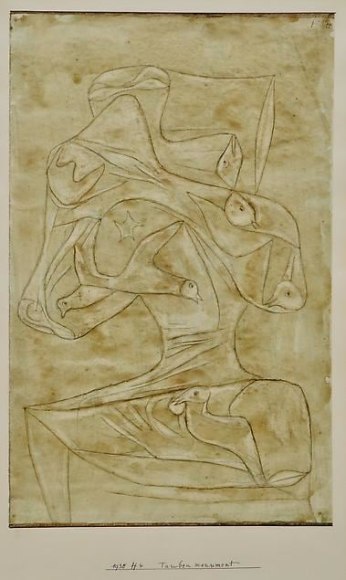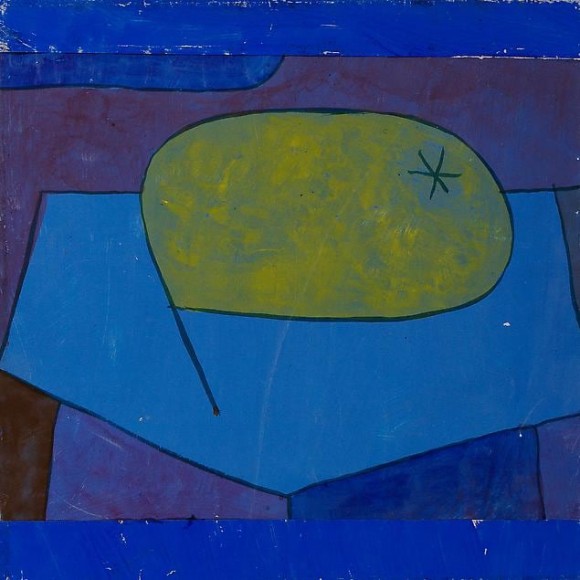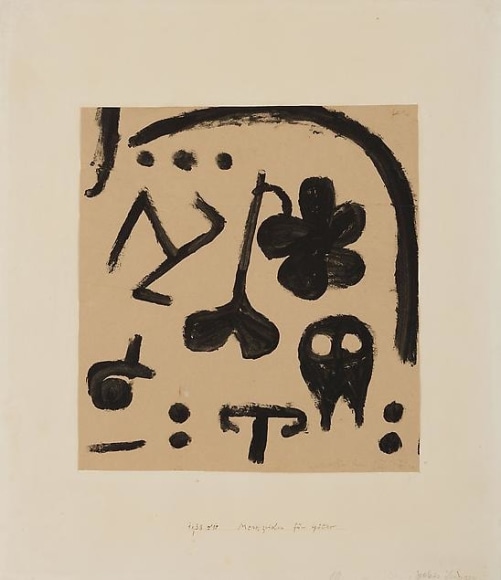Moeller Fine Art is pleased to announce "Paul Klee: Early and Late Years, 1894-1940," to take place in its New York gallery from 6 May - 14 June. The exhibition brings together 35 works, including loans from the Zentrum Paul Klee, Bern, rarely seen examples from private collections and works for sale, highlighting seminal moments from the artist's oeuvre of the 1910s to the poignancy of his final years.
Dame, ruhend, 1911, among the earliest works in the exhibition, already shows Paul Klee (1879-1940) working in a characteristic vein of whimsical simplicity, as he depicts a woman lying under a parasol in black and white. Cubist and Futurist tendencies further refined such whimsy by 1913, and were intensified with the introduction of color following Klee's visit to North Africa the following year. Works like Städtebild, 1915 are emblematic of this new and daring palette, which Klee expertly employed to depict stacked forms condensed in a shallow space. At the same time, Klee was honing the delicate line which would come to typify his work, often heightened by poetic allusion in its content and experimentation with new media. Auserwählter Knabe, 1918, a pivotal work of this period, shows an ethereal child, suspended among hovering forms in a composition created from two pieces of primed linen cut and recombined on cardboard.
With the rise of the Nazi regime, the pathos latent in such images only deepened when Klee was dismissed from his position at The Academy of Fine Arts in Dusseldorf in 1933 and returned to his native Bern. At this time he began to see himself as a damaged fruit, as, for instance, in Beulen Birne, 1934, which once belonged to Ernest Hemingway. In this work, Klee finds a visual parallel of his inner state in an overripe pear, depicted in deepest blue. In 1935, Klee was diagnosed with scleroderma, a debilitating disease which at once forced him to face his own mortality and spurred his creative output. Klee's final years communicate the essence of his work more immediately than any other period: Das kranke Herz, 1939, displays a colorful lexicon of pained, child-like symbols with a punctured heart at its center. In der Leibeshöhle, 1940, created the year of the artist's death, depicts a black bird-like figure with an amorphous mass in its body cavity, perhaps consuming itself from within or sending inspiration out into the world.
An illustrated catalogue, including an essay by Christine Hopfengart, accompanies the exhibition.

